There are moments as an instructor when you look around the dojo and notice that your students are producing some astonishing aikido. I’ve been having rather a lot of these recently, so much so that I wanted to share it here. If you’ve been following this blog for a while you’ll have picked up that I’m not the biggest fan of the traditional teaching method (see here, here, and here). What you may not be aware of is that I decided to do something about that.
For the last two years (excluding covid lockdown time), I’ve been working on producing a set of drills and movements to teach aikido in a radically different way. This has not been easy. Its required a lot of trial and error, mind mapping (spider diagrams), constant refinement, and a general voyage of discovery.
The result is a set of unique drills that teach the fundamentals of aikido, often requiring some external equipment. For example the Rick Stick (my students decided to rename the Irimi Stick), a medicine ball, a reflex ball and so on.
The Goal
What I am trying to do with this process is reinvent the way aikido is taught while still teaching aikido. I’m a fan of something called Principles Based Teaching (PBT). This allows you to rapidly teach something by separating out the fundamentals. The problem with PBT is that while you can transmit information quickly you cannot teach the art. A complete beginner can learn all the joint locks in under an hour, but they won’t know what they’re called. Since I care about teaching aikido, not only the mechanics of it, this was a big hurdle.
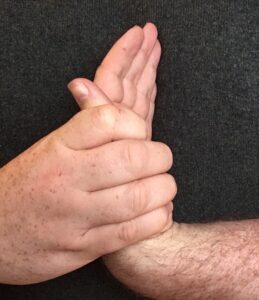
To solve this issue I decided to try breaking my class into three sections. Through trail and error this has settled into a stable pattern:
- Part 1 is the warm up (which I also reworked) and drills
- Part 2 is traditional aikido teaching
- Part 3 is a weapon technique, usually from the aiki toho iai
Parts 2 and 3 sometimes get swapped around, depending on the day and what we’re teaching. All the drills in Part 1 reinforce the fundamentals needed in the techniques in Part 2. Doing that is easy in most classes, because the drills teach fundamentals, which mean they’re relevant to all techniques.
The Drills
So these drills then, what do they do? In short, they improve the fundamentals required for effective aikido. The very underlying core of what you need. For example, I have a bunch of drills that I organised into a seminar for teaching at the Cyprus Aikikai. At the start of that course I lined everyone up and took a picture, then we spent 2 days working on drills designed to promote structure and shizentai. At the end of it, I took another picture. Here they are side by side. There is a visible difference in the posture of the students across the board.
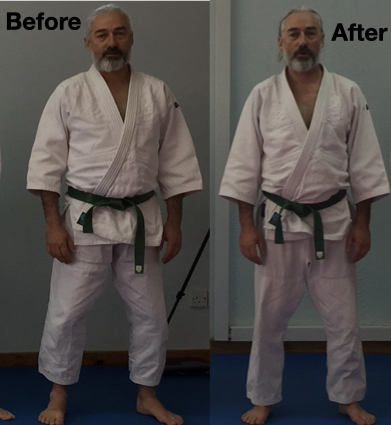
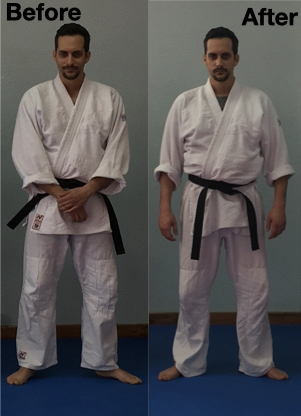
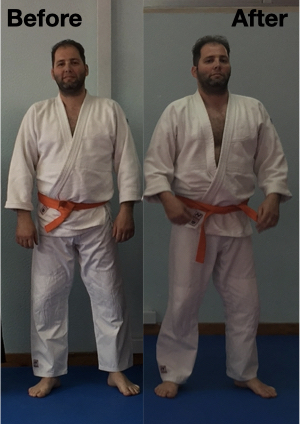
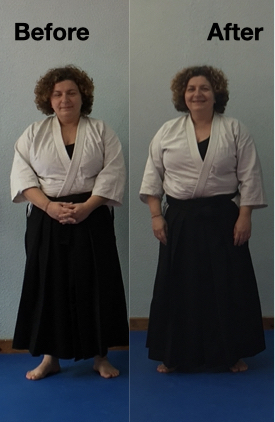
Extremely Simple, Ferociously Difficult
When I devised most of these drills I thought they were laughably simple. There isn’t much to them. When I started introducing them to classes though what I saw stunned me. The drills are simple, you can teach them in seconds, however, it became clear that they are ferociously difficult to get right. Each drill contains a compressed set of fundamentals separated from the techniques. Fundamentals that have to be performed correctly. Repetition of these drills though is producing fast improvement and some astonishing aikido.
A 5th Kyu With Shodan Arms
There have been some exceptional results stemming from these drills. In the most recent session two students were practicing ushiro waza ryote dori irimi nage omote. This is a very circular technique and a 2nd kyu student was encountering severe difficulty. They asked me, “What do you do if uke’s arm doesn’t bend in?” I asked them to show me what they meant and it was illuminating.
As they turned back in to perform the irimi nage the uke’s arm remained out. Not locked out straight, but with a near perfect curving structure in the arm. The sort of structure that people who practice the unbendable arm dream of obtaining. I know because I used to dream of it. It was relaxed, extended, utterly unyielding. It was also consistent. This student was doing it from habit every single time. I outweigh her by at least 40kgs, I lift weights, and yet it took almost my entire strength to bend her arm during the technique. When you add in that I’m a 5th dan and she’s a 5th kyu with less than 6 months training it’s mind-blowing that she could do that.
I know I shouldn’t use strength to bend the arm, obviously, but I wanted to know how much it would take to make it bend. The answer was all of it. I was doing a technique on a student and experiencing the outcome of my training drills. It’s not the first time it’s happened either.
Centre Drops, Arm Extensions, And All The Rest
Postural improvements and extension through the arms are just some of the more noticeable results. Another one that I noticed after only a couple of months of training, is far more subtle. The new students were consistently dropping their weight through the ukes. I’ve heard this referred to by some people as ‘heavy hands’. If that term has meaning for you then you’ll know exactly what I was seeing. You’ll also know that’s a level of technical ability far beyond someone with only 8 weeks training. Except that now, it isn’t beyond them.
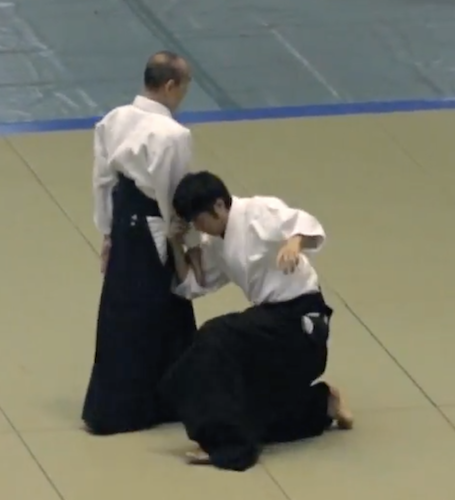
Anecdotes Become Data
Standing there, looking around the dojo at the astonishing level of aikido I was seeing I realised something. My two year experiment was beginning to show results. More importantly, reproducible results. Most of the students in the room are showing a level of competence with the fundamentals that exceeds where you would expect them to be. If it were only one or two of them I would write it off as anecdotal. The numbers though are pushing it towards data. It isn’t, because this was not a proper experiment with controls, measurements etc. I’d love to do one though. I think the results would be fascinating biomechanically, and what it could mean for teaching aikido.
So Much Work To Do
I’ve created a raft of problems for myself though. When I devised these drills I did not think they would produce the results they have. They are currently far beyond my wildest dreams. I hoped for a faster rate of increase in ability. I am completely unprepared for an astonishing level of aikido in some areas, but not in others. There is a lack of balance that needs to be addressed. The students have some amazing fundamentals but they lack the knowledge of how to use them fully.
This is a big problem, not just for them but also for me. It’s a wonderful problem to have though and I look forward to solving it.
I’d like to make a special mention here. Last month I noticed that there were 5 visitors from Ukraine. Given everything that is happening I cannot tell you humbled and honoured I am that you still took time to come to this site. Thank you, good luck in your struggle, and stay safe.
If you can afford it, and would like to help out,
consider donating some brain fuel!
Also, if you enjoyed this post you can find further insights in this book.